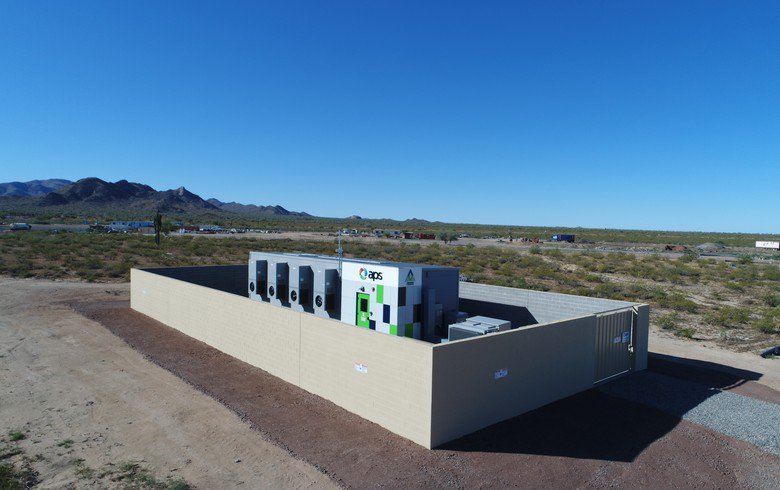APS ramps up battery storage efforts for its solar portfolio

Arizona Public Service (APS) will add 850 megawatts (MW) of battery storage and at least 100 MW of new solar generation by 2025, in one of the largest battery storage initiatives in the United States, the company said on Feb. 21.
The additional battery storage could come online as early as 2020.
Battery storage enables utilities such as APS to store solar-produced power for future use, including the late afternoon and early evening period, when power demand is higher. Solar plants typically generate the most power during the midday sun, which is also when power demand tends to be lower.
“As storage technology improves and declines in cost, we will increasingly be able to store the power of the sun cost-efficiently to deliver when our customers need it,” APS Chairman and CEO Don Brandt said.
The Phoenix-based utility has laid out three initiatives to achieve this goal, which will enable APS customers to consume solar-generated power during off-peak and peak demand times.
The first initiative will be adding battery storage systems totaling 200 MW to two solar plants in Maricopa County and near Yuma. APS will work with electricity storage developer Invenergy to install six battery systems at the two plants by 2020, with additional upgrades completed by 2021.
A second initiative will be to build 500 MW of solar storage and stand-alone battery storage by 2025, including a 100 MW solar storage plant. The utility will issue a request for proposals this summer. This initiative is in addition to a solar storage project that APS is developing with Tempe-based First Solar. That project, announced in February 2018 with an anticipated completion date of 2021, calls for First Solar to build a battery powered facility and a 65 MW solar field. APS has a 15-year purchasing agreement with First Solar, and the utility will use the stored batter power during peak demand times.
The third initiative involves developing 150 MW of battery storage that APS can access for power during peak times. APS will get a 100 MW battery from electric power distributor AES and a 50 MW battery from Invenergy. APS said it will still rely on natural gas-fired generation to power peak demand times. But instead of a traditional 20-year contract, APS has arranged a seven-year purchasing agreement with electric power provider Calpine to provide 463 MW of gas-fired generation. That shorter time period will enable APS to expand its use of battery storage during peak times, APS said.
The utility owns or leases 6,236 MW of generated capacity, according to its 2017 annual report. Of that 6,236 MW, 8.2 percent consists of power from renewable resources such as solar, wind, geothermal, biomass and biogas; 31.5 percent comes from nuclear; 16.9 percent is purchased conventional power; 23.7 percent is from oil or gas-fired generation; and 19.7 percent is from coal.
The Energy Storage Association (ESA) praised APS for integrating energy storage into its system and generating savings for consumers. “We especially applaud APS for partnering with third parties in this effort, sending a strong signal for businesses to invest in energy storage in Arizona,” said Kelly Speakes-Backman, CEO of ESA.
APS owns or has access to 240 MW of solar-powered generation, including nine solar plants through its AZ Sun program and the 40 MW Red Rock solar plant. APS also has agreements to obtain power from the 250 MW Solana solar station.
APS’s existing battery storage capacity for its solar program consists of four batteries. Two 2 MW/hr batteries are being used as part of a solar research program with the Electric Power Research Institute, and two 4 MW/hr batteries are is use at the Punkin Center in rural Arizona to support grid operations.
APS’s footprint consists of 2.7 million people across 11 of Arizona’s counties.
